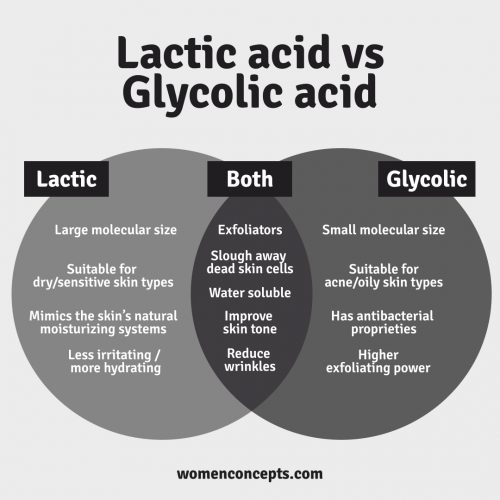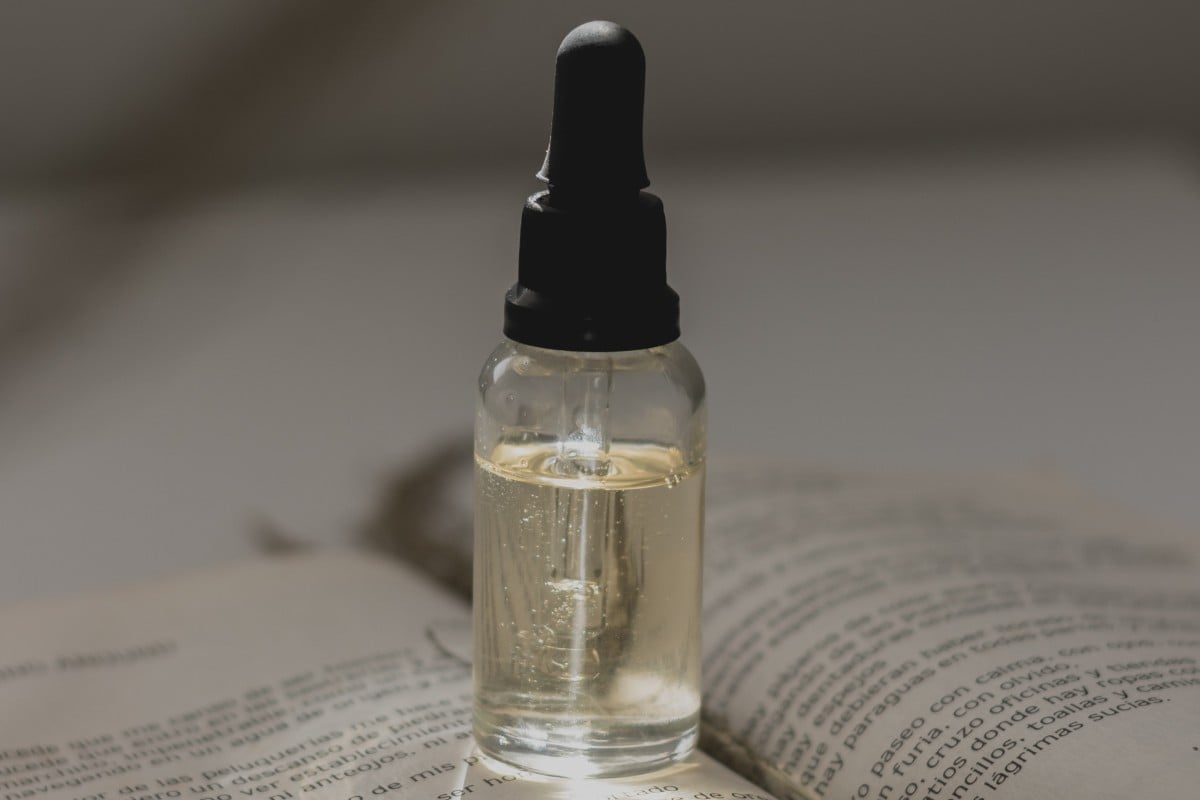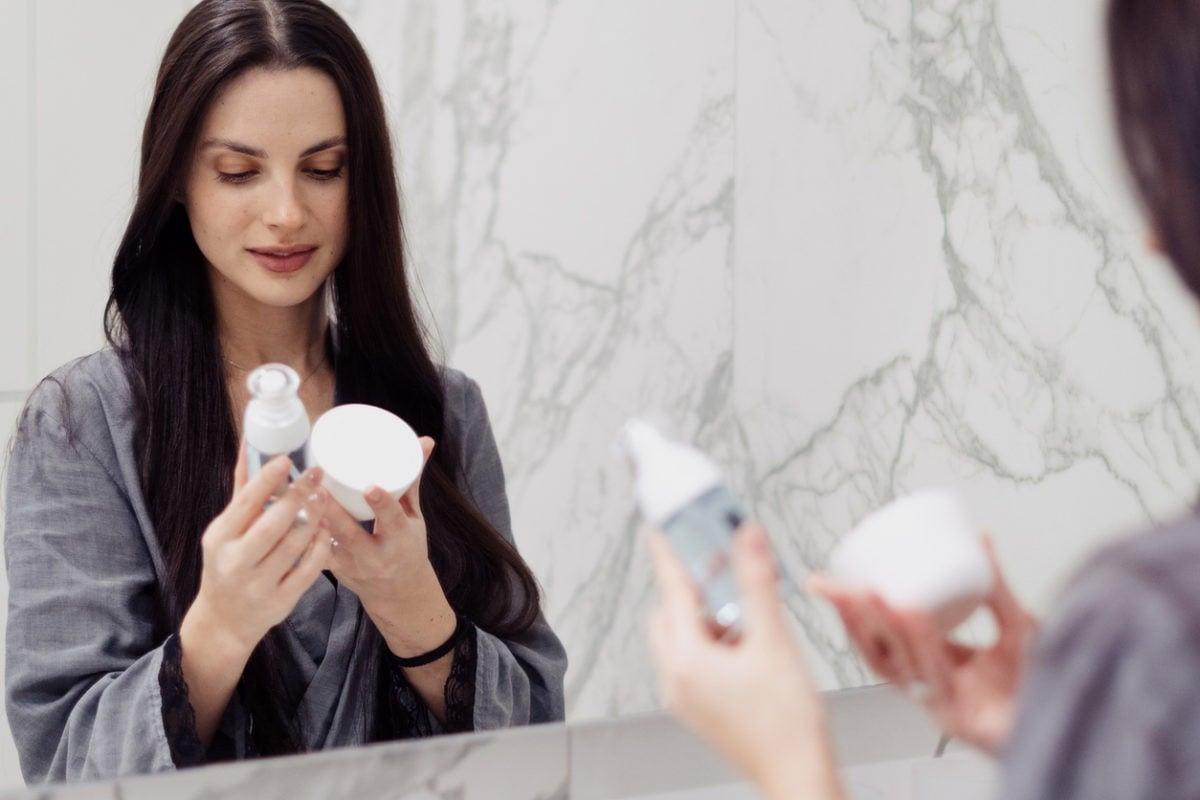Acids have endless benefits, including exfoliation, skin brightening properties, increased collagen production, and reduced wrinkles we simply cannot overlook. AHAs have skyrocketed the skincare world, and they are rarely missing from our routines. While there are many types of alpha-hydroxy acids with different strengths, above all stand glycolic and lactic acids — the two best-known AHAs.
Although both are structurally similar and do the same thing, like breaking down dead cells, lactic acid and glycolic acid work slightly differently. Besides the exfoliating effect both have in common, glycolic and lactic acids have their own properties. So, which one is better? Lactic or glycolic acid? Welp, there’s no general answer to this question. The right question is which one is more suitable for me? Pretty much, it all depends on your skin type and what your expectations are.
Glycolic acid
Out of all AHAs, glycolic acid has the lowest molecular weight, allowing it to penetrate the deepest among others acids. This means glycolic exfoliates more effectively, but once with that, the dryness and irritation risk arises. When used on a regular basis, glycolic acid can help minimize the appearance of fine lines and wrinkles while smoothing out rough patches on the skin surface evening skin tone. Also, glycolic acid is effective for reducing acne, thanks to its antibacterial and anti-inflammatory properties.
Lactic acid
Lactic acid is structurally similar to glycolic acid but is gentler due to the larger molecules that don’t allow it to sink in the skin but work on the surface. Also, lactic acid is a humectant, meaning it attracts water and binds it to the skin. Some studies also point out that lactic acid may promote ceramide synthesis, which helps strengthen the barrier and trap moisture. There’s not much data about lactic acid’s optimal pH, but it’s believed to be between 3-4, which is unlikely to cause irritations. That makes it more suitable for sensitive skin types.
Lactic acid vs. glycolic acid
The differences between glycolic acid and lactic acid can get confusing, but here’s what they have in common: they both act as exfoliators, removing the old cells and promoting new collagen fibers. This makes glycolic and lactic acids able to reduce aging signs, breakouts, scars, and discolorations.
Now, the main difference between glycolic acid and lactic acid is that glycolic acid has a small molecular size while lactic acid has large molecules. This allows glycolic acid to penetrate deeper into the skin, having higher exfoliating power and being more aggressive. Since glycolic acid also has antibacterial properties, it’s better at clearing up breakouts.
Lactic acid, on the other hand, mimics the skin’s own natural moisturizing systems, and studies confirmed it to be less irritating than glycolic acid. Lactic acid, which is gentler than glycolic, is considered an excellent moisturizer and is more appropriate for people with dry skin. Besides, lactic has a lower pH than glycolic acid, thus it can work effectively at lower concentrations, making it suitable for sensitive skin.

Which one should I use?
No matter how much we love AHAs, their improper use may damage the barrier function, leading to dryness, irritations, and sensitivities. So, it’s deadly important to know which acid to use. If your skin is oily or breakout-prone, you should use glycolic acid because it has antibacterial properties and regulates oil production more effectively. Plus, oily skin is less likely to get irritated by glycolic acid.
On the flip side, it’s best to go with lactic acid if you have dry, sensitive skin because it’s hydrating and less irritating. Besides, sensitive or dry skin might be a sign of a disrupted skin barrier, and lactic acid helps to strengthen it. For wrinkles and dark spots, both AHAs do.
Can I use glycolic acid and lactic acid together?
Use glycolic acid and lactic acid together only if they’re formulated in the same product. Otherwise, the best is to use them on alternative days or use one in the morning, and the other at night. Combining AHAs is serious business as one mistake can lead to a broken skin barrier, redness, irritations, and sensitivities.
How to use AHAs?
How to use your AHA product mostly depend on the product at hand. If it’s a cleanser or toner, it can be used daily. Moisturizers and serums with higher concentrations of AHAs (above 10%) are usually used two or three times weekly. You don’t need to exfoliate too often anyway.
If it’s your first time with AHAs, start with a low concentrated product and gradually work up to stronger formulas, allowing your skin adjust to it. Last but not least, don’t forget your sunscreen. AHAs, especially glycolic acid, increase the skin’s sensitivity to UV rays.





